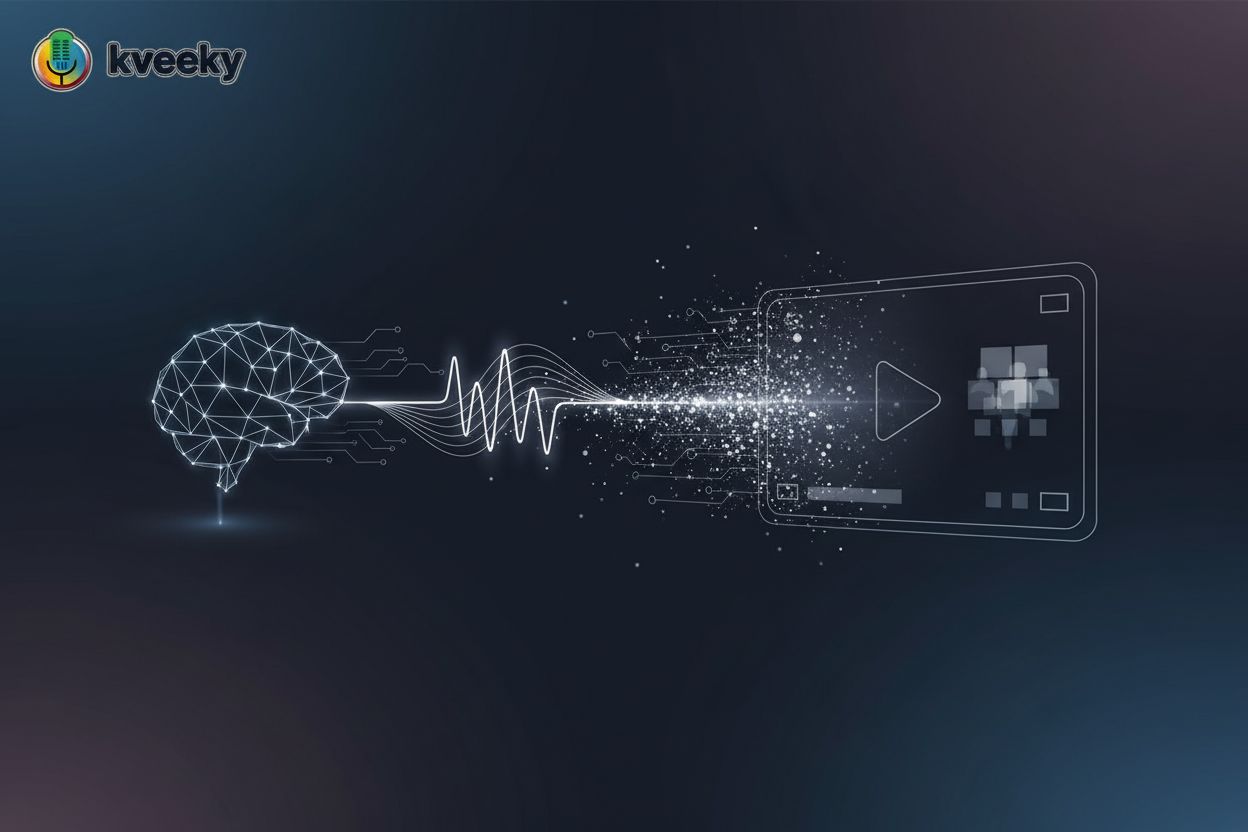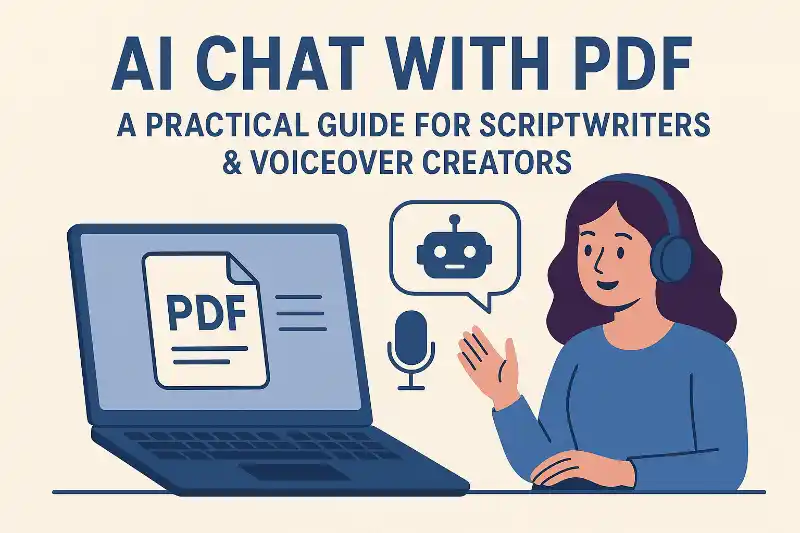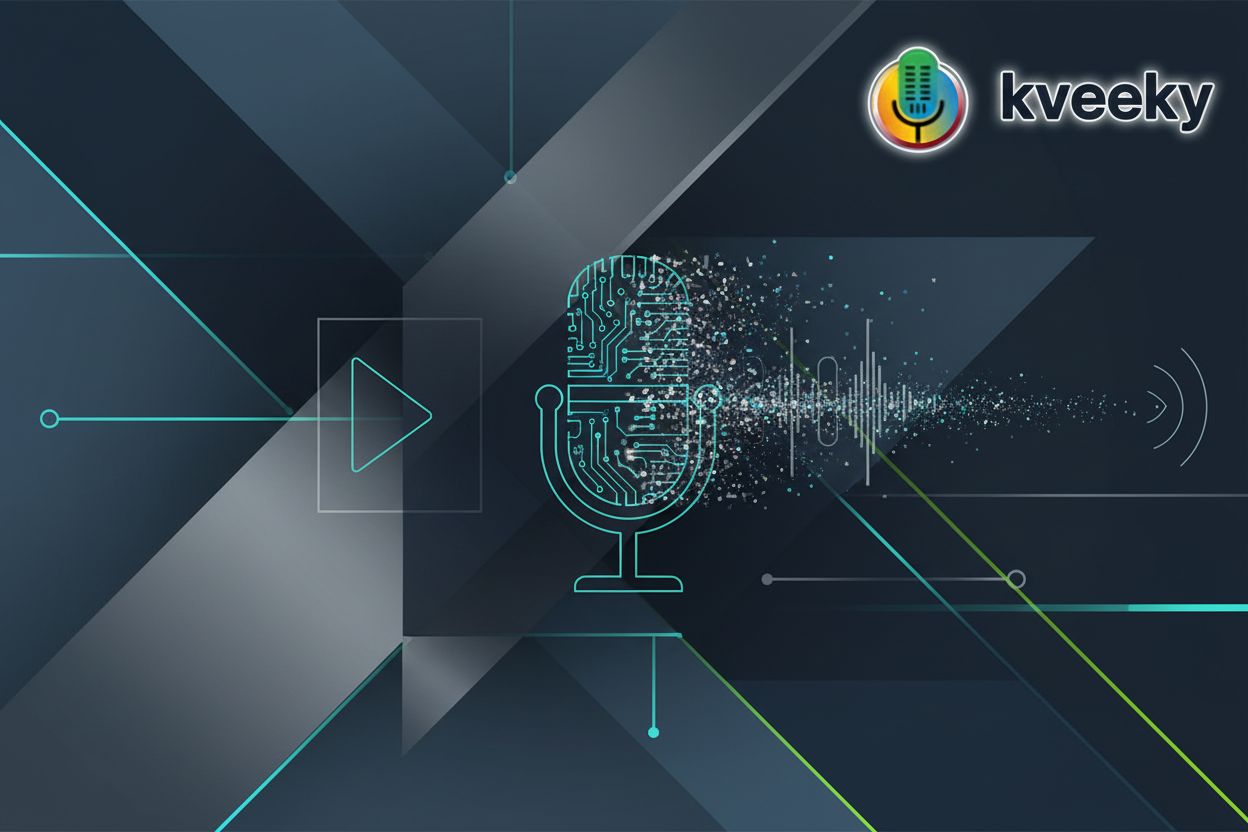Unlock AI Voice Magic Exploring Neural Network Architectures
TL;DR
The Evolution of Speech Synthesis A Journey Through Architectures
Alright, let's dive into the evolution of speech synthesis, it's kinda wild how far it's come. You might not realize it, but you're interacting with speech ai all the time.
So, how did we even start making computers talk? Well, early speech synthesis relied on just piecing together pre-recorded snippets of speech. Think of it like digital scrapbooking, but with sounds.
- Concatenation synthesis was the OG method. It used bits and pieces of recorded speech to form new sentences. The problem? It often sounded choppy and unnatural, and it was hard to get the emotion right.
- Then came statistical parametric synthesis. This approach uses math to model the characteristics of speech. Think frequency, duration, and how the voice actually sounds.
Hidden Markov Models and Their Limits
- Hidden Markov Models (hmms) became the go-to for a while. They're not bad, but they can make speech sound kinda robotic and over-smoothed. Like when you set the "smoothness" setting too high on a photo editor, you know? While HMMs had advantages like language independence, they struggled with complex context dependencies, making them less ideal for nuanced speech. This limitation, along with their tendency to produce over-smoothed audio, eventually paved the way for newer approaches.
The Deep Learning Revolution
- Deep learning showed up and changed everything. Neural networks could learn way more complex patterns than hmms, and they were much better at capturing the nuances of human speech.
- Neural nets offered a way to get around those old limitations. We're talking less robotic sounds, more natural-sounding voices, and better emotional expression. It's like going from dial-up to fiber optic, seriously.
So next up, we'll check out the specific neural network architectures that are making all this voice magic happen.
WaveNet and Its Impact on Raw Waveform Modeling
Ever wonder how your phone can understand what you say? It's not magic, but it's pretty darn close! We're gonna break down one of the key technologies making it all possible: WaveNet.
WaveNet is kinda a big deal in the world of ai voice tech. It was one of the first models that could directly model raw audio waveforms. Instead of working with simplified representations of sound, it tackles the real, messy audio data head-on.
- Autoregressive Magic: WaveNet is autoregressive, meaning it predicts each audio sample based on the samples that came before it. It's like saying, "If the last few sounds were this, then the next sound is most likely that."
- Conditional Probabilities: WaveNet uses conditional probabilities to make these predictions. It figures out the chance of a particular sound happening based on what it's already heard.
Think of it like predicting the next word in a sentence. You don't just guess randomly; you use the words you've already heard to make an educated guess. Wavenet does the same thing, but with audio samples.
The math behind it involves some pretty intense conditional probabilities, but the basic idea is that it's learning the patterns in audio.
WaveNet's architecture actually took inspiration from image generation models like PixelCNN and PixelRNN. These models generate images pixel by pixel, using the same autoregressive approach. WaveNet adapted this by using dilated causal convolutions. These convolutions allow the model to have a very large receptive field, meaning it can consider a wide range of past audio samples when predicting the next one, without increasing the computational cost too much. This was crucial for capturing long-range dependencies in audio.
WaveNet's not perfect, but it's a huge step forward. Now we'll see how it deals with longer audio clips using dilated convolutions.
Deep Voice A Multi-Model Approach to TTS
Okay, let's break down Deep Voice, which is kinda a big deal in the tts world. Did you know it was actually one of the first end-to-end systems? Pretty cool, right?
So, Deep Voice uses a multi-model approach, which means it's not just one network doing everything; it's a team effort. It relies on four neural networks working together to pull off tts.
- First, there's a segmentation model that figures out where the phoneme boundaries are. Think of it like chopping up the speech into its tiniest sound units.
- Then, a grapheme-to-phoneme conversion model steps in. You know how some letters sound different depending on the word? This model's got it covered.
- Next up is the phoneme duration and fundamental frequency prediction model. This predicts how long each phoneme should last and what the pitch should be. It's what makes the voice sound natural and not robotic.
- Finally, a WaveNet-based audio synthesis model takes all that info and creates the actual audio waveform. WaveNet is a key component 'cause it can generate really realistic sounds.
One of the coolest things about Deep Voice is it can handle multiple speakers. How does it do that? Speaker embeddings!
- Speaker embeddings are like digital fingerprints for voices. They capture the unique characteristics of each speaker. It's like a secret code that tells the model, "Hey, this is this person talking".
- The model uses these embeddings to control the rnn states and nonlinearity biases. Specifically, the speaker embedding is often fed as an additional input to the RNN layers or used to bias their activations. This allows the RNN to adjust its internal state and processing based on the speaker's characteristics, effectively "tweaking" its behavior to match that speaker's vocal patterns, pitch, and timbre.
- They also used batch normalization and residual connections to help the model train better.
As the ai summer blog points out, Deep Voice 2 separated the phoneme duration and frequency models, which was a big improvement.
Next up, we'll explore other approaches to improving tts, including speaker embeddings.
Tacotron and Tacotron 2 End-to-End Spectrogram Generation
Okay, so you wanna know how ai can make computers sound like real people, huh? Well, let's talk about Tacotron and Tacotron 2; these are like, the rockstars of end-to-end speech making.
Tacotron's like, the first real attempt at making an end-to-end system for turning text into sound. It doesn't mess around with a bunch of separate models; it just takes text and spits out a spectrogram, which is basically a visual representation of the sound.
- It's a sequence-to-sequence model, meaning it takes a sequence of characters as input and produces a sequence of spectrogram frames as output. Think of it like translating one language to another, but the languages are text and sound. So, the model have an encoder and a decoder to pull this off.
- The attention mechanism is super important. It helps the decoder focus on relevant parts of the input text when generating each part of the spectrogram. It's like highlighting the important words in a sentence when you're trying to understand it.
- Tacotron takes in characters and gives out raw spectrograms. Pretty neat, huh?
Now, what makes Tacotron tick? It's all about the CBHG module. Think of CBHG as a fancy feature extractor.
- It's got a 1D convolution bank to grab important features, a highway network for smooth information flow, and a bidirectional GRU for understanding the sequence of those features.
- The features extracted by the convolution bank are typically local acoustic patterns within the input sequence. The highway network helps to propagate these features effectively through multiple layers, preventing information loss. The bidirectional GRU then processes these features sequentially in both forward and backward directions, capturing contextual information about the sound sequence.
- CBHG is used in both the encoder and the post-processing network. It's like the special ingredient in a really good recipe, you know?
Tacotron 2 is basically Tacotron but, like, better. It makes some important changes-- tweaks to the old architecture.
- It using convolutional layers and lstm-based encoder that helps capture more nuances.
- Location-sensitive attention is another upgrade, helping the model keep track of where it's at in the text.
- The decoder is an autoregressive rnn with a Pre-Net and LSTMs, making the voice sound even more natural.
- And finally, a convolutional Post-Net refines the spectrogram, and a modified WaveNet acts as the vocoder.
basically, Tacotron 2 makes speech sounds way more real. And you need that in everything from video games to ai assistants.
So, that's Tacotron and Tacotron 2 in a nutshell. Next up, we'll dive into some other ways to make ai voices even better.
Transformers Revolutionizing TTS with Parallel Processing
You know, it's kinda mind-blowing how ai is changing everything, even how computers talk! Let's get into how transformers are making a huge splash in text-to-speech (tts) tech.
Transformers are really changing the game in tts, mostly because they're way more efficient. They're especially good at handling long dependencies in text, which is something older models struggled with.
One of the biggest advantages is parallel processing. Unlike recurrent neural networks (rnns) that have to process data sequentially, transformers can do it all at once, making training and inference much faster.
Think of it like this: rnns are like a relay race, where each runner has to wait for the previous one. Transformers are more like a bunch of runners doing their own thing at the same time.
Recurrent neural networks (rnns) used to be the go-to for tts, but they had some serious limitations. While the exact study linking decision trees to RNN limitations isn't readily available, the core issue was that RNNs, despite their sequential nature, could struggle to effectively capture very long-range dependencies and complex contextual relationships in text. Transformers, with their self-attention mechanism, excel at this by allowing the model to weigh the importance of any word in the input sequence, regardless of its distance, thus overcoming these context dependency issues more effectively.
Multi-head attention mechanisms are key to the transformer's power. They let the model focus on different parts of the input text simultaneously, which helps it understand the context better.
This means the model can look at a whole sentence at once and figure out how the words relate to each other, instead of reading it one word at a time.
So, what does a transformer-based tts system actually look like? It's kinda like a bunch of building blocks stacked together.
First, you usually have a text-to-phoneme converter to turn the text into sounds. This is followed by scaled positional encoding, helping the model understand the order of the words.
Then, there's an encoder and decoder pre-net, which process the input and output data. After that, you've got the transformer encoder with its multi-head attention, followed by the transformer decoder also rocking multi-head self-attention.
Finally, mel linear and stop linear projections help turn the data into actual audio.
FastSpeech and Beyond Achieving Speed and Controllability
Okay, so you want to make ai voices sound even more real and, like, super fast? That's where FastSpeech comes in!
It's all about making things quicker and more controllable, especially for things like video production. FastSpeech does this with a few cool tricks:
Speed Boost: It generates mel-spectrograms--those visual representations of sound--in parallel instead of one step at a time. This makes it way faster than previous models.
Hard Alignment: It uses a "hard alignment" between the phonemes (the smallest units of sound) and the mel-spectrogram frames. This direct connection makes the process more efficient.
Voice Speed Control: A "length regulator" lets you tweak the phoneme durations to speed up or slow down the voice. This gives you better control over the speech rate for everything from podcasts to e-learning.
Basically, FastSpeech figures out how long each phoneme should last and then adjusts the mel-spectrogram accordingly. It's like having a speed dial for voices!
- For example; if you’re creating an e-learning module and needs to shorten the video, you can easily use the length regulator.
FastSpeech 2 and FastPitch are two examples, of models that came later, that improved upon the original FastSpeech idea. FastSpeech 2, for instance, introduced better control over pitch and energy, leading to more expressive speech. FastPitch built upon these ideas, often incorporating techniques for more robust pitch prediction and improved prosody. These advancements made voices even faster, more reliable, and more controllable.
So, now that we got that sorted, let's explore how else to make these ai voices sound just right.
Flow-Based TTS WaveGlow and Probability Density
WaveGlow and other flow-based models, huh? It's kinda like teaching ai to whisper sweet nothings—but with math! Instead of guessing, these models get real precise about probability.
- Flow-based models use something called normalizing flows. They're are a cool alternative to generative adversarial networks (gans) and variational autoencoders (vaes) when it comes to tts.
- The key here is accurately modeling probability density functions. This is how they figure out the likelihood of certain sounds.
- Flow-based models use invertible mappings. It's complex math, but think of it as a way to build complex distributions from simple ones.
So, how does this all come together in a real tts system, you ask? Well, let's look at waveglow.
- WaveGlow is a flow-based tts model that's built on ideas from both Glow and WaveNet. It's like taking the best parts of two great recipes.
- It achieves fast and efficient audio synthesis without needing autoregression. No more waiting around for each sample!
- WaveGlow generates speech directly from mel spectrograms. It's like painting a sound picture.
The crucial role of affine coupling layers and 1x1 invertible convolutions in WaveGlow's flow-based architecture is that they allow for efficient and exact likelihood computation. Affine coupling layers enable the model to transform a simple distribution (like a Gaussian) into a complex one, while the 1x1 invertible convolutions ensure that these transformations are reversible and preserve the dimensionality. This invertibility is key to the "flow" concept, allowing the model to generate audio directly from the mel spectrogram by mapping a simple noise distribution to the complex distribution of audio, and vice-versa, without the sequential dependencies of autoregressive models.
- there's other flow-based models too, dontcha know? Models like Glow-TTS and Flow-TTS is also used, and they each have their own way of doing things.
- Flowtron, for example, uses Autoregressive Flow-based Generative Networks. It's a mouthful, but it's all about generating realistic voices.
- The world of flow-based tts is pretty diverse with many different approaches.
Now that we have explore flow-based tts, let's keep moving and see how to make these voices even better.
GAN-Based TTS and End-to-End Adversarial Text-to-Speech (EATS)
GAN-based tts is all about making ai speech sound more realistic, kinda like teaching a computer to mimic a human voice. ever notice how some ai voices just sound...off? Well, generative adversarial networks (gans) are one way researchers are tackling that.
- EATS takes it a step further; it's an end-to-end system that directly turns text into audio. that means no more separate steps for making the voice sound good, it all happens at once.
- Inspired by GAN-TTS, EATS uses adversarial training. it's like having two ai networks compete each other to generate the most high-fidelity audio.
- Eats can work directly with raw text or phoneme sequences, whatever is handy. this gives it some flexibility in what kinda data it starts with.
The aligner module figures out how to line up the text with the sounds. Think of it like a translator, but for text and speech. This module produces low-frequency aligned features. These features capture the overall acoustic characteristics and timing information, but are "low-frequency" in the sense that they represent broader phonetic or prosodic structures rather than the fine-grained details of the audio waveform.
Then, the decoder module takes those aligned features and turns them into the actual audio waveform using a bunch of 1D convolutions. It's basically upsampling the features to create the final sound. The upsampling process involves increasing the temporal resolution of the features, often through transposed convolutions or other upsampling techniques, to generate the high-frequency details necessary for a full audio waveform. This step bridges the gap from the more abstract, low-frequency representations to the detailed, sample-by-sample audio output.
So, with eats, the goal is clear: make ai voices sound as close to human as possible. And with the power of gans, it's getting closer all the time.
Level Up Your Videos with AI Voiceovers
Did you know ai can now do voiceovers? Pretty cool, huh? It's changing the video game big time.
Gone are the days of spending tons on voice actors and studio time. Now, you can turn scripts into lifelike voiceovers with ai, and it's easier than ever.
Think about e-learning, where consistent voice quality is key, or video games that need tons of character dialogue. ai voiceovers are a gift.
Ai can also help you write scripts and provide voiceover services in multiple languages, which is great if you're trying to reach a global audience.
You get customizable voice options and can even adjust things like tone and pace. It's like having a whole team of voice actors at your fingertips, but, you know, ai.
These platforms use text-to-speech generation that's getting seriously good. It uses neural network architectures, often building on models like Tacotron and WaveNet-based vocoders, to mimic the nuances of human speech and it all happens in just seconds.
Imagine you're a video producer. You can save time and money by using ai for everything from initial script drafts to the final voiceover.
So, that's how ai is changing the video world. Next up, we'll be showing you how it levels up your content.
Conclusion Navigating the Landscape of AI Voice Synthesis
Alright, so we've been digging deep into ai voice synthesis, huh? It's pretty amazing how computers are learning to talk more like humans.
- We've seen how far speech synthesis has come, from choppy, pre-recorded snippets to complex neural networks. It's not perfect, but it is getting there.
- Models like WaveNet, Tacotron, and FastSpeech are pushing the boundaries of what's possible. Each new architecture brings us closer to natural-sounding, expressive ai voices.
- Ai voiceovers are already changing content creation, making things faster and cheaper. Think e-learning modules or video games needing tons of dialogue— ai is definitely a game-changer.
Remember that Mozilla's TTS repo is a great resource if you wants to tinker around with these models. So many possibilities!
Now, it's time to see what's next.












